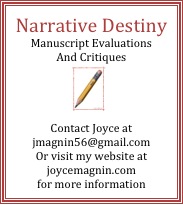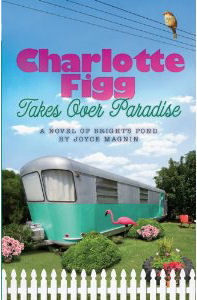|
Here’s
the thing: I am not the craftiest woman on the planet. Unlike my
sister, who can scrape a dead raccoon off the side of the road and turn
it into a lovely centerpiece, I could scrape the same raccoon off the
side of the road, follow her instructions to the tee and still wind up
with little more than a dead raccoon with a pink bow on its head. It
would not be pretty. My mother could turn an egg carton into a
caterpillar and a ball of yarn into a rhododendron.
A glue gun in my hands is a
dangerous weapon, as I have been known to glue my hair to my forehead,
burn my elbow, and set fire to a tablecloth. Glitter drives me nuts. As
far as I am concerned, whoever invented the stuff should be forced to
clean it up! I mean really, who needs glitter? The last time I used it
I got a scratched retina.
Now, before all you craft mavens
write me stern e-mails, you should know that I do appreciate crafts. I
mean, Martha Stewart cracks me up. The other day I watched her make a
tree stand from a log. She drilled and hammered and nailed. Then when I
thought it looked pretty good and maybe she was finished, she got out
her paints and set about improving on nature. Funny thing is when she
finished, the log did look better than nature intended. My friend
Rebecca is crafty and so is my BFF Pammy. They can make things—quilts,
even birdcages from bread dough. Rebecca can turn several large pieces
of cardboard into a gingerbread house that would make the Keebler Elves
swoon. Me? I would have just left it a box. I mean, how do they do it?
Crafty people can look at
ordinary stuff like buttons and ribbon and bottle caps and yarn and
rusty old tin cans and see the Taj Mahal. Crafty people can take a
dozen flowers and arrange them into something spectacular. I could take
the exact same twelve flowers and no matter how hard I worked, my
creation would still be nothing more than twelve flowers stuck in vase.
I haven’t got it, that seventh sense—the sense of craft. And I will
admit, I’m jealous.
It’s hard not to compare myself
with the craft mavens of the world. I suppose I have a secret wish to
be like them, to wake up one day and . . . I don’t know, make a replica
of the Eiffel Tower with toilet paper rolls and toothpicks. But I know
it will never happen. My skill sets are all wrong. And I would probably
glue my fingers together.
However, and this might come as
a surprise to many of you, I do enjoy needlework, particularly
cross-stitch. I am completely self-taught, and as a result I have what
you might call my own techniques. Techniques that sometimes get me into
trouble. But in the end, I usually have a pretty good-looking finished
piece. That is when I actually finish something. But that’s a subject
for another column.
Writing is like crafts. It’s
easy to compare yourself with another writer. But there comes a time
when you have to find your own techniques. Some writers produce copious
notes and write intricate outlines before they begin the novel. Others,
like me, say a prayer and jump on a wing and off we go. Some folks
interview their characters and keep impressive Excel spreadsheets with
all the data they need at their fingertips. Me? I’m still not sure if
my main character is blonde or brunette by chapter twenty-seven. Some
authors write the whole draft in one fell swoop. Then there are those
of us who edit and reedit every single word, agonizing over them the
whole way through.
There
is no right or wrong. It’s your technique. I might not make a proper
waste knot and my fibers tend to tangle an awful lot,
|
but
in the end,
it’s my work and it looks good. It’s about staying true to yourself.
Don’t worry what others are doing with the same words. You go ahead,
set them out your way, line them up, make them march and sing and dance
along on the page your way. Believe me, it will be a lot more fun.
Some folks can take the words
available to all of us and spin them into a suspense tale that would
have curled Edgar Allen Poe’s toes. Others wield their computer
keyboard like a magic wand and produce epic fantasy yarns. Thing is, we
all have access to the same words. It’s all in how we arrange them. I
write and wind up with quirk. And I’m okay with that. I’ll never write
mystery or romance or even suspense or science fiction. But that’s not
my skill set. I look at words and see quirk. You look at words and see
intrigue and suspense or long kisses on a loading dock. And that’s
good. It’s all good.
The trick, I suppose, is in
discovering your best way to use your
words. It’s in finding your voice and sticking to it no matter how many
dead raccoon centerpieces shame you, or how many bird cages constructed
from toothpicks make you wish you could force your fingers to work
differently or that you could master a glue gun. Just stick to your own
guns and write what seems correct for you. So what if I can’t make a
wedding gown from lace doilies. I can enjoy the work of those who can
and believe in myself and my particular talents. Now go ahead, write
what your heart tells you. What’s most important is that you do it.
Someone once said that writers
are like small streams in the world. Each going a different direction
but in the end we all feed the same ocean. The important thing is
getting there.



|











